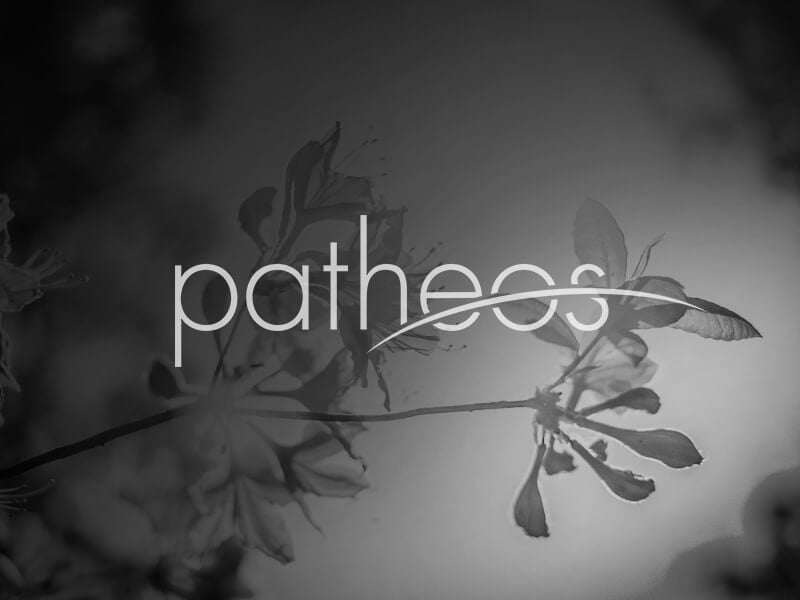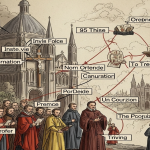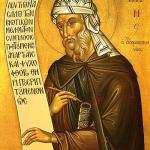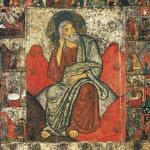Vatican City, Feb 3, 2017 / 07:30 am (CNA/EWTN News).- While divisions between the Vatican and the break-off Society of St. Pius X still exist, representatives from both sides have said the proposal appears to be the best option for unity, and steps are already being taken to study it. The SSPX believes “that the Roman authorities consider the personal prelature to be the canonical structure which best reflects our real situation,” Archbishop Bernard Fellay said in an interview with Spanish magazine Vida Nueva, published Feb. 3. And when it comes to the Society themselves, he said “we also think that the personal prelature is the most appropriate regimen for the Fraternity in the current circumstances.” A personal prelature, which is a Church jurisdiction without geographical boundaries designed to carry out particular pastoral initiatives, has been on the table for the SSPX for years. At present, the only personal prelature in the Church is Opus Dei, so should they take the offer, they would become the second entity to embrace such a structure. Despite past hesitancy to accept the prelature in the past, Fellay, who is the current superior general of the SSPX, seems to imply that the Society’s opinion on the matter is changing. In an interview with Vida Nueva released simultaneously with that of Fellay, Archbishop Guido Pozzo, head of Ecclesia Dei – the Vatican office of the responsible for doctrinal discussions with the SSPX – said a “profound examination” is being made of the legal text. Once this is done, a draft of the constitutions will then be presented to the Holy Father, he said, but stressed that on the Vatican side, “the necessary condition for the canonical recognition is adherence to the contents of the Doctrinal Statement that the Holy See presented to the SSPX.” The SSPX was founded by Archbishop Marcel Lefebvre in 1970 to form priests, as a response to what he described as errors that had crept into the Church following the Second Vatican Council. Its relations with the Holy See became particularly strained in 1988 when Archbishop Lefebvre and Bishop Antonio de Castro Mayer consecrated four bishops without the permission of Pope John Paul II. The illicit consecration resulted in the excommunication of the six bishops; the excommunications of the surviving bishops were lifted in 2009 by Benedict XVI, and since then, negotiations “to rediscover full communion with the Church” have continued between the Society and the Vatican. In remitting the excommunications, Benedict also noted that “doctrinal questions obviously remain and until they are clarified the Society has no canonical status in the Church and its ministers cannot legitimately exercise any ministry.” The biggest obstacles for the Society's reconciliation have been the statements on religious liberty in Vatican II's declaration Dignitatis humanae as well as the declaration Nostra aetate, which it claims contradict previous Catholic teaching. However, in a sign of goodwill, Pope Francis during the Jubilee of Mercy extended to the priests of the SSPX the faculty to validly hear confessions and absolve penitents. He has since extended this faculty until further notice. In his interview, Archbishop Fellay said there are still hurdles that need to be jumped before full unity is reached, and that “both today and yesterday, the main obstacle is the degree of obligation of adherence to the Second Vatican Council.” An “important step” was taken when Pozzo made a previous declaration that “certain texts of the Council did not constitute criteria for Catholicity.” Among these, he said, are texts related to religious freedom, relations with non-Christian religions, ecumenism and liturgical reform. “If we were able to determine that this is the line of the whole Church and not of one person or another, that would be decisive,” he said, but cautioned that there are still several “red lines” the Society isn’t yet willing to cross. These lines, he said, are drawn when it comes to documents outlining “the way in which ecumenism is practiced, including statements very dangerous for the faith, that make you think all have the same faith; the liturgical question or the relationship between the Church and the State.” “All these are issues on which we will not yield. This is not a matter of a position or personal point of view, or only peculiar to our congregation,” he said, adding that the Society upholds “what the Church has already taught and defined on those issues.” “We could summarize by saying that the conditio sine quae non (condition without which it is not) is that Rome accept us the way we are.” Fellay noted that another point that makes unity difficult the fact that there is currently “a deep division in the Church between conservatives and progressives, which reaches to the highest levels.” “In a certain measure, we are the victims of this dispute, since the official declaration for our communion with the See of Peter will hardly be satisfactory for both positions,” he said, but noted that while it’s hard to place a date when reconciliation will take place, Rome seems to be more open to a public recognition of “our status as Catholics.” Responding to labels frequently associated with the Society such as “ultraconservative” and “sectarian,” Fellay said that if a person wants to “disqualify” the SSPX with these labels, “then you have to condemn the entire Catholic Church, throughout its entire history.” “We simply follow and apply what was practiced by the Church in the entire world for centuries,” he said, but noted that while “they wanted to change the Church” in both the pre and post Council era, “we did not abandon the rich heritage of our Holy Mother the Church.” “This simple fact is enough to give us a conservative look,” he said, adding that the Society’s attempts to “defend and protect” themselves from these type of attacks since the 1970s have been “misunderstood.” Fellay also said that despite ongoing points of division, the process of unification has sped up under Pope Francis. While things began with St. John Paul II and continued with Benedict XVI, who played “a very important role,” it seems that “the most important steps were taken in Francis' pontificate.” Noting the uptick in priestly vocations within the SSPX, Fellay said what makes their understanding of the priesthood unique is “the spirit of the sacrifice of the Cross, of the sacrifice of the altar, which the priests renews in intimate union with Our Lord, and with which he must identify himself.” In his interview, Archbishop Pozzo said that when it comes to the question of Vatican II, “it’s a false problem to ask if a Catholic can accept the Council or not.” “A good Catholic cannot reject it,” he said, “because it is a universal assembly of bishops gathered around the Pope.” The real problem, then, is with the interpretation of conciliar documents. Pointing to an idea that came from Benedict XVI, Pozzo said the correct interpretation is that the documents be read “one in the line of renewal in continuity with tradition.” “Vatican II must be understood and read in the context of the tradition of the Church and of her constant magisterium,” he said, but stressed that “the magisterial authority of the Church cannot stop in 1962.” “Neither is the magisterium above the Word, written or transmitted, nor progress, in the best understanding of the mysteries of faith,” he said, adding that teachings of the Vatican II “have a different degree of authority, which corresponds to a different degree of adherence.” Once full reconciliation between the Vatican and the SSPX is reached, further discussion could take place on certain issues “that are not proper to the matter of the faith, but of themes that refer to the pastoral application of conciliar orientations and teachings,” he said, pointing to the relation between Church and State, ecumenism, interreligious dialogue and liturgical reform as examples. “A deeper discussion of these themes could be useful for greater precision and clarification, in order to avoid misunderstandings or ambiguities which, unfortunately, are widespread,” he said, explaining that it’s important to “avoid being rigid” or stuck on “maximum positions” while claiming to be open to discussion. However, he said that ongoing dialogue with the SSPX “can increasingly help to specify the correct interpretation, to avoid misunderstandings, errors or ambiguities that are present in a certain way of understanding and interpreting some conciliar teachings.” Pozzo said he is “confident” in the path the Vatican is taking with the SSPX, explaining that “I am not an optimist nor a pessimist, but a realist (and) I have confidence we are going in the right direction.”While divisions between the Vatican and the break-off Society of St. Pius X still exist, representatives from both sides have said the proposal appears to be the best option for unity, and steps are already being taken to study it. The SSPX believes “that the Roman authorities consider the personal prelature to be the canonical structure which best reflects our real situation,” Archbishop Bernard Fellay said in an interview with Spanish magazine Vida Nueva, published Feb. 3. And when it comes to the Society themselves, he said “we also think that the personal prelature is the most appropriate regimen for the Fraternity in the current circumstances.” A personal prelature, which is a Church jurisdiction without geographical boundaries designed to carry out particular pastoral initiatives, has been on the table for the SSPX for years. At present, the only personal prelature in the Church is Opus Dei, so should they take the offer, they would become the second entity to embrace such a structure. Despite past hesitancy to accept the prelature in the past, Fellay, who is the current superior general of the SSPX, seems to imply that the Society’s opinion on the matter is changing. In an interview with Vida Nueva released simultaneously with that of Fellay, Archbishop Guido Pozzo, head of Ecclesia Dei – the Vatican office of the responsible for doctrinal discussions with the SSPX – said a “profound examination” is being made of the legal text. Once this is done, a draft of the constitutions will then be presented to the Holy Father, he said, but stressed that on the Vatican side, “the necessary condition for the canonical recognition is adherence to the contents of the Doctrinal Statement that the Holy See presented to the SSPX.” The SSPX was founded by Archbishop Marcel Lefebvre in 1970 to form priests, as a response to what he described as errors that had crept into the Church following the Second Vatican Council. Its relations with the Holy See became particularly strained in 1988 when Archbishop Lefebvre and Bishop Antonio de Castro Mayer consecrated four bishops without the permission of Pope John Paul II. The illicit consecration resulted in the excommunication of the six bishops; the excommunications of the surviving bishops were lifted in 2009 by Benedict XVI, and since then, negotiations “to rediscover full communion with the Church” have continued between the Society and the Vatican. In remitting the excommunications, Benedict also noted that “doctrinal questions obviously remain and until they are clarified the Society has no canonical status in the Church and its ministers cannot legitimately exercise any ministry.” The biggest obstacles for the Society's reconciliation have been the statements on religious liberty in Vatican II's declaration Dignitatis humanae as well as the declaration Nostra aetate, which it claims contradict previous Catholic teaching. However, in a sign of goodwill, Pope Francis during the Jubilee of Mercy extended to the priests of the SSPX the faculty to validly hear confessions and absolve penitents. He has since extended this faculty until further notice. In his interview, Archbishop Fellay said there are still hurdles that need to be jumped before full unity is reached, and that “both today and yesterday, the main obstacle is the degree of obligation of adherence to the Second Vatican Council.” An “important step” was taken when Pozzo made a previous declaration that “certain texts of the Council did not constitute criteria for Catholicity.” Among these, he said, are texts related to religious freedom, relations with non-Christian religions, ecumenism and liturgical reform. “If we were able to determine that this is the line of the whole Church and not of one person or another, that would be decisive,” he said, but cautioned that there are still several “red lines” the Society isn’t yet willing to cross. These lines, he said, are drawn when it comes to documents outlining “the way in which ecumenism is practiced, including statements very dangerous for the faith, that make you think all have the same faith; the liturgical question or the relationship between the Church and the State.” “All these are issues on which we will not yield. This is not a matter of a position or personal point of view, or only peculiar to our congregation,” he said, adding that the Society upholds “what the Church has already taught and defined on those issues.” “We could summarize by saying that the conditio sine quae non (condition without which it is not) is that Rome accept us the way we are.” Fellay noted that another point that makes unity difficult the fact that there is currently “a deep division in the Church between conservatives and progressives, which reaches to the highest levels.” “In a certain measure, we are the victims of this dispute, since the official declaration for our communion with the See of Peter will hardly be satisfactory for both positions,” he said, but noted that while it’s hard to place a date when reconciliation will take place, Rome seems to be more open to a public recognition of “our status as Catholics.” Responding to labels frequently associated with the Society such as “ultraconservative” and “sectarian,” Fellay said that if a person wants to “disqualify” the SSPX with these labels, “then you have to condemn the entire Catholic Church, throughout its entire history.” “We simply follow and apply what was practiced by the Church in the entire world for centuries,” he said, but noted that while “they wanted to change the Church” in both the pre and post Council era, “we did not abandon the rich heritage of our Holy Mother the Church.” “This simple fact is enough to give us a conservative look,” he said, adding that the Society’s attempts to “defend and protect” themselves from these type of attacks since the 1970s have been “misunderstood.” Fellay also said that despite ongoing points of division, the process of unification has sped up under Pope Francis. While things began with St. John Paul II and continued with Benedict XVI, who played “a very important role,” it seems that “the most important steps were taken in Francis' pontificate.” Noting the uptick in priestly vocations within the SSPX, Fellay said what makes their understanding of the priesthood unique is “the spirit of the sacrifice of the Cross, of the sacrifice of the altar, which the priests renews in intimate union with Our Lord, and with which he must identify himself.” In his interview, Archbishop Pozzo said that when it comes to the question of Vatican II, “it’s a false problem to ask if a Catholic can accept the Council or not.” “A good Catholic cannot reject it,” he said, “because it is a universal assembly of bishops gathered around the Pope.” The real problem, then, is with the interpretation of conciliar documents. Pointing to an idea that came from Benedict XVI, Pozzo said the correct interpretation is that the documents be read “one in the line of renewal in continuity with tradition.” “Vatican II must be understood and read in the context of the tradition of the Church and of her constant magisterium,” he said, but stressed that “the magisterial authority of the Church cannot stop in 1962.” “Neither is the magisterium above the Word, written or transmitted, nor progress, in the best understanding of the mysteries of faith,” he said, adding that teachings of the Vatican II “have a different degree of authority, which corresponds to a different degree of adherence.” Once full reconciliation between the Vatican and the SSPX is reached, further discussion could take place on certain issues “that are not proper to the matter of the faith, but of themes that refer to the pastoral application of conciliar orientations and teachings,” he said, pointing to the relation between Church and State, ecumenism, interreligious dialogue and liturgical reform as examples. “A deeper discussion of these themes could be useful for greater precision and clarification, in order to avoid misunderstandings or ambiguities which, unfortunately, are widespread,” he said, explaining that it’s important to “avoid being rigid” or stuck on “maximum positions” while claiming to be open to discussion. However, he said that ongoing dialogue with the SSPX “can increasingly help to specify the correct interpretation, to avoid misunderstandings, errors or ambiguities that are present in a certain way of understanding and interpreting some conciliar teachings.” Pozzo said he is “confident” in the path the Vatican is taking with the SSPX, explaining that “I am not an optimist nor a pessimist, but a realist (and) I have confidence we are going in the right direction.”v Read more















